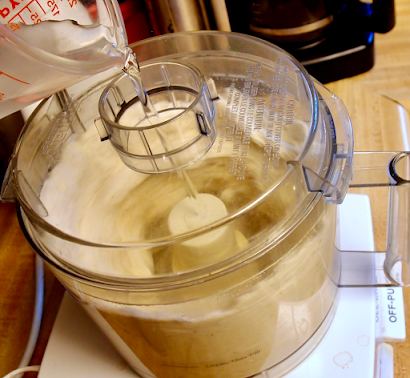5 August 2020
Recipe from Cook's Illustrated All Time Best Soups, America's Test Kitchen, 2016, p. 90; recipe also available online.
It is odd to be making soup in the summer. I chose to do so to provide some added variety for lunch after seeing the recipe demonstrated on a recent America's Test Kitchen. Summer, though, may be the best time to make this vegetarian vegetable soup so you can get all of the fresh ingredients that the recipe demands. The soup is similar to Minestrone but it differs in the addition of pistou, which is similar to pesto, just before serving.
Most of the time making this soup is spent preparing the vegetables. First, the pistou was made by processing fresh basil leaves, Parmesan cheese, olive oil, and garlic to form a smooth paste. This was set aside. Leek, celery, carrot, and salt were cooked in olive oil in a Dutch oven until softened. Minced garlic was added and cooked until fragrant. Water and vegetable broth (I used a broth made from concentrate) were added and brought to a simmer. Pasta (tubetti rigati) was added and cooked until slightly softened then green beans were added. After 5 minutes canned navy beans, with the canning liquid, were added followed by zucchini (seeded) and tomato (also seeded). The soup was simmered until the vegetables were cooked. A dollop of pistou was stirred into each serving bowl just before serving. Total time was 85 minutes of which 45 was preparing vegetables.
The soup was good, but not great. To me the strongest flavor in the broth was garlic, I was disappointed to not notice much flavor from the basil in the pistou. It was not a heavy soup which gained points for it as a summer soup. The broth improved in flavor over time though the vegetable colors faded. I don't expect to make this again, though I might have liked it more if it had been made with a chicken broth instead of vegetable.














